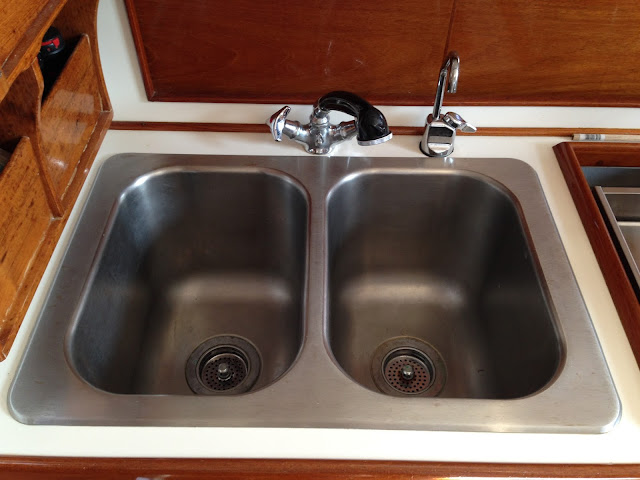Rosalind's Cockpit
Here is some more information on the instruments described in the video.
- Remote VHF radio microphone. This communications instrument allows us to monitor and operate the VHF radio from the cockpit while having the VHF radio unit permanently mounted in the main cabin. The VHF radio is used to communicate with other vessels, drawbridge operators, marinas, the Coast Guard, etc.; to obtain weather information; and to receive Coast Guard broadcast messages. The VHF is connected to an antenna at the top of the main mast and has a range of about 10 nautical miles (20 kilometers).
- AIS, Automatic Identification System, is a digital VHF radio-based transponder system that uses Global Positioning System (GPS) and identifies a ship's name, course and speed, call sign, and other information. The system calculates the closest point of approach (CPA) and time to CPA between Rosalind and surrounding commercial ships and pleasure vessels equipped with AIS transponders. These ships appear as triangles on our chartplotter and by selecting them on the touchscreen we can get all the specifics of each ship. Additionally, we can set the AIS to automatically alarm if any CPA is within a set exclusion area.
- Iridium Go! satellite communication device. This satellite communications instrument connects to our smartphone and tablet using Wi-fi. We intend to use it during offshore passages to obtain NOAA weather faxes by email and to communicate to shore by text message. The system operates 10 times slower than dial-up internet! Additionally, we can place and receive satellite telephone calls.
- Lawrence multi-touch display. This touchscreen navigation instrument has our RADAR control and display, AIS control and display, and chartplotter (electronic charting system and GPS) all available on one screen. The RADAR enables us to see ships and landmasses around us as well as approaching thunderstorms.
- Autopilot. This electric motor, belt-driven navigation instrument is connected to the wheel and the vessel's course is set and adjusted at the autopilot head.
- Depthsounder, fishfinder. This navigation instrument tells us the water depth and bottom contour as well as the relative size, quantity, and depth of fish in the water under Rosalind.
Tour of Rosalind's Cockpit Navigation and Communication Instruments










